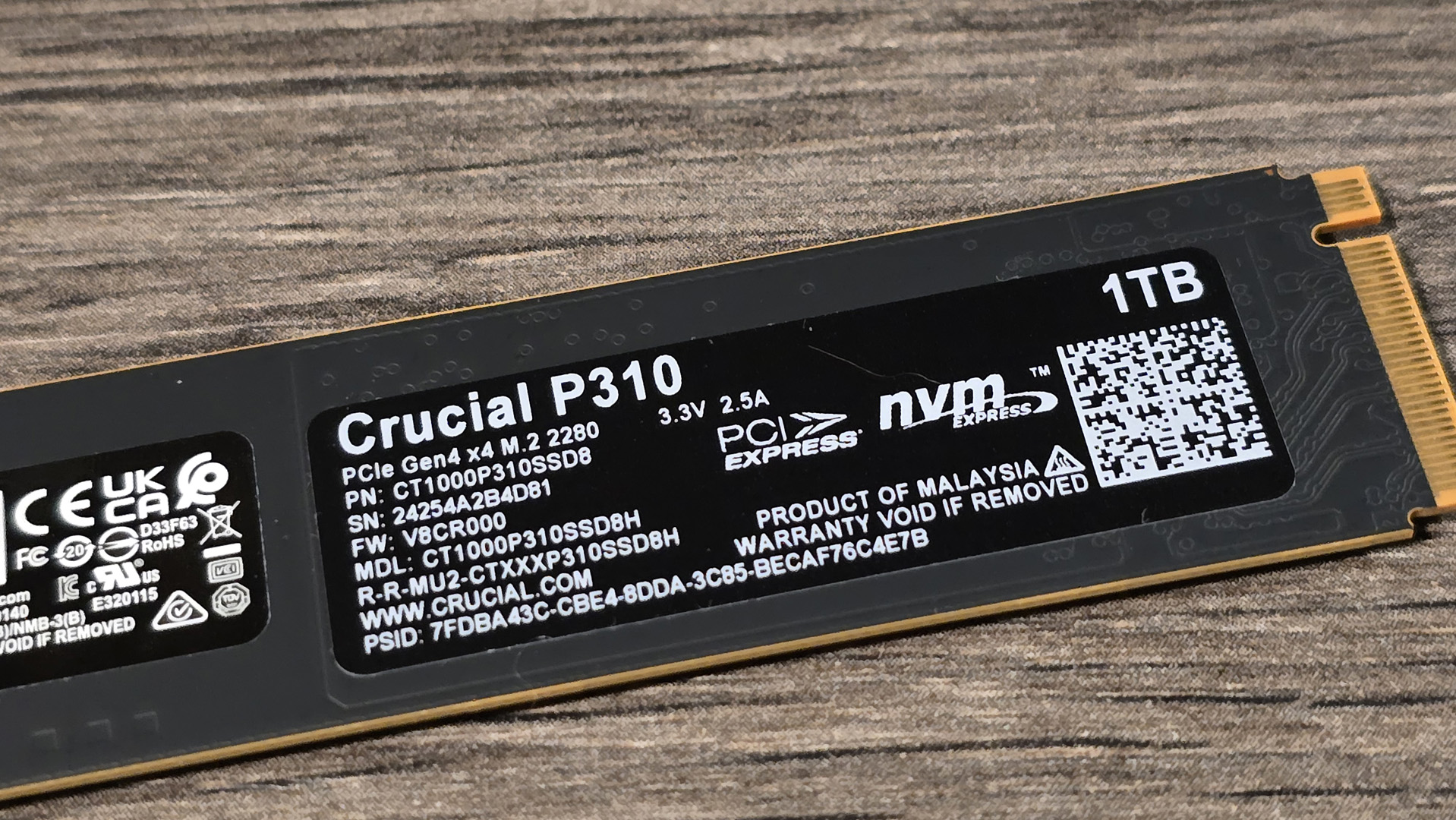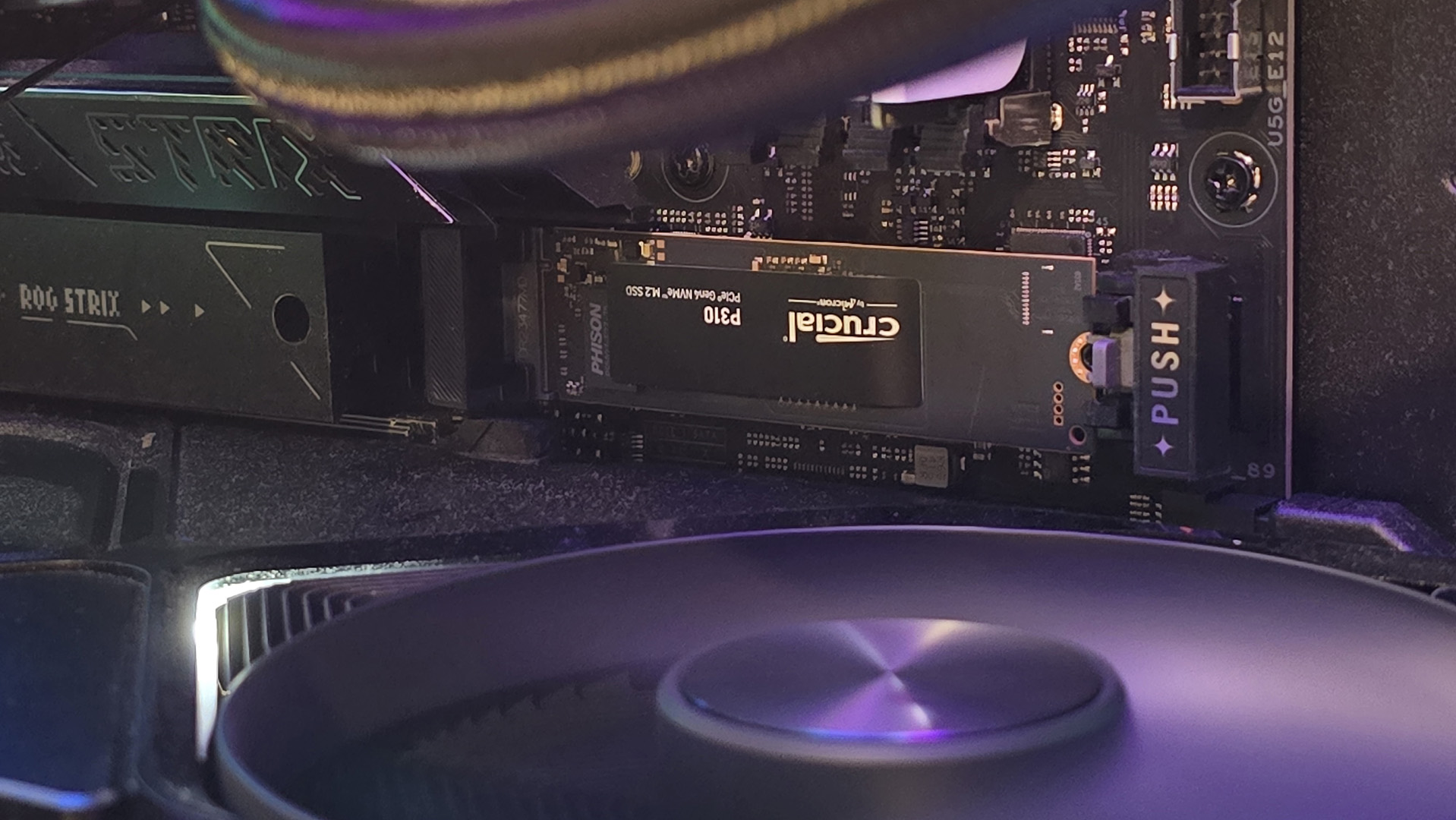
Little to big, this budget QLC drive certainly delivers.
Crucial’s P310 launched late last year as a PCIe 4.0 expansion option for the woefully underwhelming storage capacity found in some of our favorite handheld gaming PCs. Yeah, you can grab a Steam Deck OLED or Asus ROG Ally with a ton of storage straight out of the gate, but the uptick in pricing just isn’t cost-effective compared to the base models. Given both of them and their ilk in general typically do support M.2 drives, and it’s relatively easy to upgrade them, it often made more sense to just replace that storage later down the line with a larger, better, aftermarket SSD instead.
That’s where the first P310 came into play. Complete with its compact 2230 form factor. Crucial’s P310, Western Digital’s WD_Black SN770M, Corsair’s MP600 Mini, and a spate of other 2230 drives provided solid solutions for that problem; however, in the case of WD and Crucial, they both came with significant drawbacks.
For the P310, it touted 232-layer QLC NAND, whereas WD had Kioxia’s 112-layer TLC NAND. Effectively, you could opt for either a “cheaper” solution with Crucial at $215 for a 2 TB unit that has all the drawbacks QLC is well known for. Or (at time of writing) $220 for a 1 TB WD Black unit, but with aging 112-layer TLC and slower sequential speeds as a result.
Although yes, technically, you could run either of those in your gaming rig (they’re still on the M.2 form factor after all), they’re still very toasty boys and honestly are just not well suited to it.
Capacity: 1 TB
Interface: PCIe 4.0 x4
Memory controller: Phison E27T
Flash memory: Micron 232-layer QLC NAND
Rated performance: 7,100 MB/s sustained read, 6,000 MB/s sustained write
Endurance: 220 TBW
Warranty: Five years
Price: $70 | £70
That’s where the P310 M.2 2280 variant comes into play. All the features that the tiny 2230 Steam Deck drive had, but with a larger form factor, better pricing, and far better efficiency as a result. Crucial hopes that this sizing change, this recipe, is enough to shift it from that rather bespoke position of just being “another Steam Deck SSD” and pushes it toward becoming one of the best SSDs you can get your hands on today, certainly from a value perspective anyway.
Top-line specs between the two form factors are identical. They’re both single-sided designs, both feature Micron 232-layer QLC NAND, both lack DRAM, and both utilize Phison’s E27T controller (a DRAMless four-channel design built off the back of TSMC’s 12nm process; yes, that does mean the price of these might go up if those US tariffs come into effect and stock runs out).
Top-line performance figures for the 2280 equally match up to its tiny cousin too. Even comparing the 1TB model I have here on test to the 2230, you’re looking at 7,100 MB/s on sequential reads and 6,000 MB/s on the writes, with a grand total of 220 TBW on the endurance front, doubling to 440 TBW for the 2TB variants. That’s not a whole lot by any means, but you do get a solid five-year warranty to back it up, and ideally you wouldn’t be using this drive for anything more than gaming.
PC Gamer test bench
CPU: AMD Ryzen 9 9900X | RAM: 64 GB (2x32GB) Team Group T-Create Expert DDR5 @ 6000 C34 | GPU: Nvidia GeForce RTX 4080 Super | Motherboard: Asus ROG Strix X870E-E Gaming WiFi | CPU Cooler: Asus ROG Ryujin III 360 ARGB Extreme | PSU: 1200W NZXT C1200 (2024) 80+ Gold | Chassis: Geometric Future Model 5
And that’s the thing. QLC just isn’t built with professional workloads in mind. Not only does it lack that endurance, but in my experience, without a suitably sized cache, large file transfers tend to lose speed over time once the cache is filled or the drive heats up. The P310 does have QLC dedicated to caching, but it’s not anywhere near as effective as a pure dedicated DDR4 DRAM solution. Still, even during game downloads and installs, the likelihood is you’re never going to hit that bottleneck anyway, so it’s a fairly mute point, as long as it’s picked up with that usecase in mind.
In my testing, the P310 certainly delivered on its promise. Particularly for a $70 drive. Crystal Disk saw sequential figures absolutely bang-on target, averaging out at 7,109 MB/s on the read and 6,035 MB/s on the write, with comfortable performance on the random 4K figures too. Admittedly, the 4K read speed is a little lower than I’d like to see, and it does fail to compete with the likes of its 2230 cousin, but it does comfortably give Samsung’s latest 990 Evo Plus a thrashing. Although that’s not particularly difficult.
3D Mark Storage figures were comfortable too, with 2,999 scored on the overall index and a max bandwidth reported of 517.77, again lower than its 2230 cousin. Then there’s the load time in Final Fantasy XIV Shadowbringers. Rather curiously, it landed a score of 7.305 seconds versus the 2230’s 8.101. Intriguingly, FF XIV seems to draw an incredible amount of system power when benchmarking. There’s a chance that this could be inducing excess heat in the controller as it loads the benchmark scenes, leading to slower load times, as the smaller drive just cannot sustainably manage that heat in comparison to the 2280. Although that is just speculation.
✅ You’re only gaming and need 1 TB of storage: Perfect if you’re looking for a secondary storage drive capable of holding a few games and you don’t plan on doing anything but gaming with it.
❌ You need 2TB of storage: Simply put, there are far better TLC options out there at this capacity for very little extra outlay, and they run rings around the P310 2280.
Yet, that’s further backed up through the temperature testing as well. I benchmarked both P310s on an X870E-E from Asus, with its own built-in dedicated full-fat heatsink on top of them, and the 2280 variant sailed in at a staggering 18 degrees cooler than its tiny counterpart, and that’s with a 2 degree difference in ambient temperature as well. Thanks to that extended (normal) form factor, it’s allowed Crucial to push the NAND package further down the stick and away from the controller, helping alleviate a lot of that heat buildup.
So, looking pretty stellar then, right? Well, let’s talk price because that’s the biggy, and this is where things get a little complicated. On the surface, the 1 TB unit I have here comes in at an impressive $70. $0.07 per gigabyte. It’s actually the cheapest drive I’ve tested to date, far cheaper than its 2230 counterpart, and it makes it $15 cheaper than WD’s latest 1 TB SN7100 model too, a far superior TLC contender.
The problem occurs, however, when you scale that up to 2 TB at 2280. In short, at that capacity, the price tag slides in at $135. Still not too bad, but that’s only $5 cheaper than the 2 TB SN7100. For that saving, you’re getting worse NAND, worse performance, worse endurance, and generally a drive that struggles to keep up with its TLC counterpart in almost every measure.
Yet, if you’re after a solid, dependable 1 TB budget drive that can happily satisfy your gaming needs and nothing else, the P310 is a decent choice. Still, if you’re even mildly thinking about 2 TB and beyond, or feel like varying workload every now and then, plus can pluck up the extra $5, then any other TLC solution is just far better value and far more versatile.





